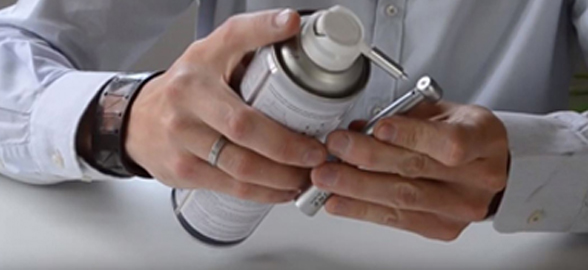The adhesion in dentistry has led to considerable improvements in restorative clinical procedures. Today, modern restorative dentistry is based on preserving tooth structure by making preparations with conservative designs based on the effectiveness of adhesive materials, but not so long ago the cavities that were made had to have retentive shapes to enhance the advantages and restrict the disadvantages of restorative materials. The era of large cavities is definitely behind us.
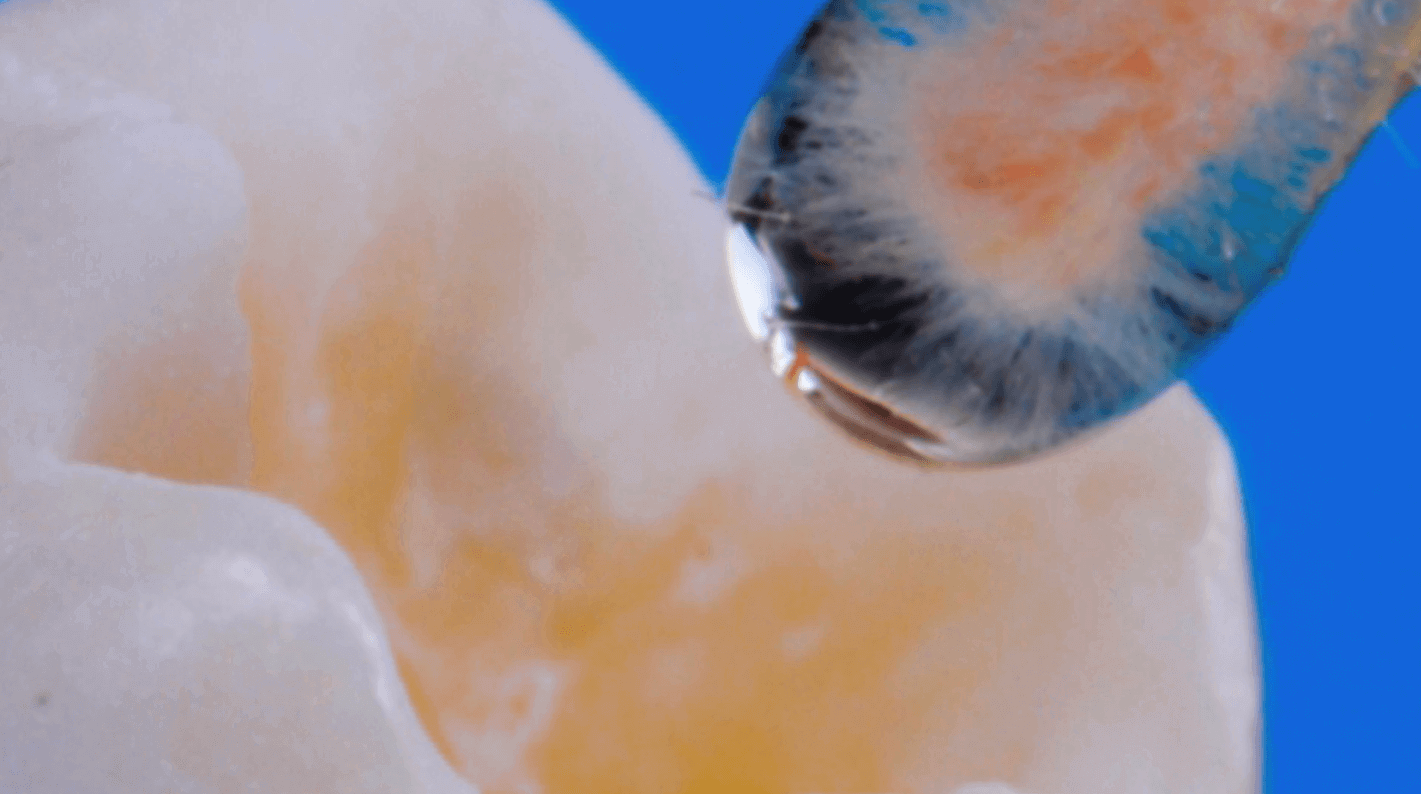
The adhesive dentistry is a crucial advance in the dental sector, however, its results are very sensitive to the technique, if we make mistakes throughout the process these will result in marginal leaks, recurrent caries or postoperative sensitivity, and in many cases, may cause the failure of the restoration.
In this blog we will review the adhesive systems over time. We invite you to join us in this journey through its historical evolution in which we will see how its commercial presentation has changed, the number of clinical steps to be used, its effectiveness and ease of use. Will you join us?
Adhesive dentistry and its historical evolution
The first attempt at the beginning of adhesive dentistry took place in 1951 with the appearance of the first adhesive: Sevrition, developed by Hagger and composed of glycerophosphoricodimethacrylate acid. This first adhesive had the disadvantage that its bond was not stable and in a humid environment it decomposed easily.
It was not until 1955 that Michael Buonocore described that the effect of the application of an acid solution on tooth enamel was to create an etching pattern on its surface. This acid was able to selectively dissolve the end tips of the enamel prisms, resulting in a porous and irregular surface capable of being penetrated by a low viscosity flowable resin. And this changed everything!
This discovery was joined by Bowen, who obtained a resin capable of adhering to the acid-etched tooth surface, this resin is known as bisphenol-glycidyl-methacrylate, or Bis-GMA. Thus, in 1965, the first dentin adhesive appeared on the market called Cervident by SS White, composed of the NPG-GMA molecule (N-phenylglycine-glycidyl methacrylate) with a bifunctional character, i.e. at one end the methacrylate would bond to the composite resin as a restorative material and the other end would bond to the dentin. Still this adhesive showed very poor properties so many treatments resulted in failure.

Image: Electron microscope scan of dentine after acid etching. Magnification 3500X. Source: Ultradent
First and second generation dental adhesives
The first phosphate-based dentin adhesive appeared in 1978: Clearfil Bond System of the manufacturer Kuraray, this two-component adhesive was based on the interaction between phosphates and calcium in dentin and enamel without etching, although, its properties were still very poor because it was not able to wet dentin. It was not until the 1980s that phosphate-based dentin adhesives began to emerge and the first of these, in 1983, was 3M Scotchbond, a two-component adhesive whose bonding capacity to enamel had doubled compared to the adhesives of the previous decade, although adhesion to dentin was still deficient. Its mechanism of action also took into account the softening effect of the smaear layer.
Subsequently, in the 1980s, various phosphate-based adhesives began to emerge, among them Bondlite of Kerr, Universal Bond of Caulk, Creation Bond of Dent-Mat and Synter Bond of Teledyne Getz, among others.
In about 1965, the first oxalates. Bowen and Cobb described a bonding system with an aqueous solution of ferric oxalate, which was later replaced by aluminum oxalate to prevent staining of the tooth. The first adhesive based on this system was developed in 1982: Tenure of Den-Mat, which peeled off the smear layer so that the resin could flow through the dentin tubuli.
Third generation dental adhesives
Two-component systems were introduced to the market in the late 1980s: primer and adhesive. This meant a considerable improvement in dentin bond strength and eliminated the need to create retentive preparations, which was the beginning of what we know today as conservative dentistry.
Third-generation adhesives not only bonded to tooth structure, but also to ceramics and metals. Their disadvantage was that they did not have a good durability, since after 3 years in the mouth their retention decreased.
Fourth generation dental adhesives
The fourth generation of adhesives started in the 1990s and represented a major breakthrough as they are able to achieve a high high bond strength to dentin, compared to previous generations and, in addition, they significantly reduced the postoperative tenderness`. The main disadvantage of this generation of adhesives is that their two components must be mixed in very precise proportions, which in practice is very difficult to carry out in the dental office and this reduces their properties.
Fifth generation dental adhesives
In the fifth generation adhesives we seemed to have it all, as they were able to adhere strongly to enamel, dentin, ceramics and metal and also their presentation is of a single component and decreasing the possibility of error. That is why they are currently the most widely used bonding agents, because they are easy to use and predictable.
What generation of adhesives do you prefer? If you are one of those who prefer to have everything in the same bottle, but you trust more if you engrave first, the fifth generation Vidu universal adhesive is our best recommendation for you:
Vidu Light Curing Universal Adhesive
- Compatible with all restorative materials
- Light curing time: 15 seconds
- Optimal adhesion to dentin and enamel
- Exceptional fastening strength
- Contents: 5 ml
- Zero plastic footprint
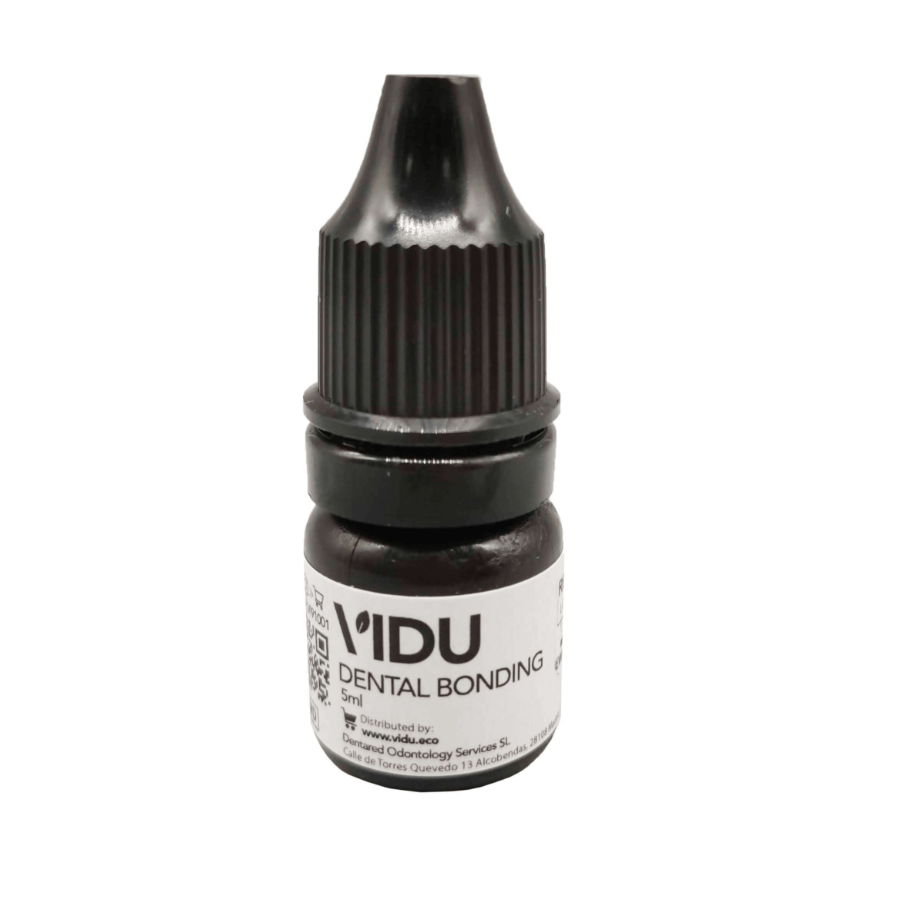
View Vidu Light Curing Universal Adhesive
Sixth generation dental adhesives
The fifth generation could still be improved, do you know how? In reducing the number of steps, after all the trend will always be towards simplification. That's why the sixth generation of adhesives proposes eliminating the etching step or include it chemically in one of the other steps.
Sixth generation adhesives do not require acid etching, at least on dentin, since they have a dentin conditioning liquid in one of their components. Their use is controversial and not universally accepted since there is still doubt about the quality of adhesion on non-etched enamel. In addition, in this generation we are back to the two bottles with the consequent margin of error that means mixing them in different proportions.
If you want a representative of the sixth generation, a two-step, self-etching adhesive, we recommend:
Kuraray Clearfil SE Bond Kit Adhesive
- Safe, fast and easy to use
- Optimum adhesion to dentin, enamel, metals and porcelain
- No excessive decalcification
- Effective marginal sealing for protection against micro-leakage
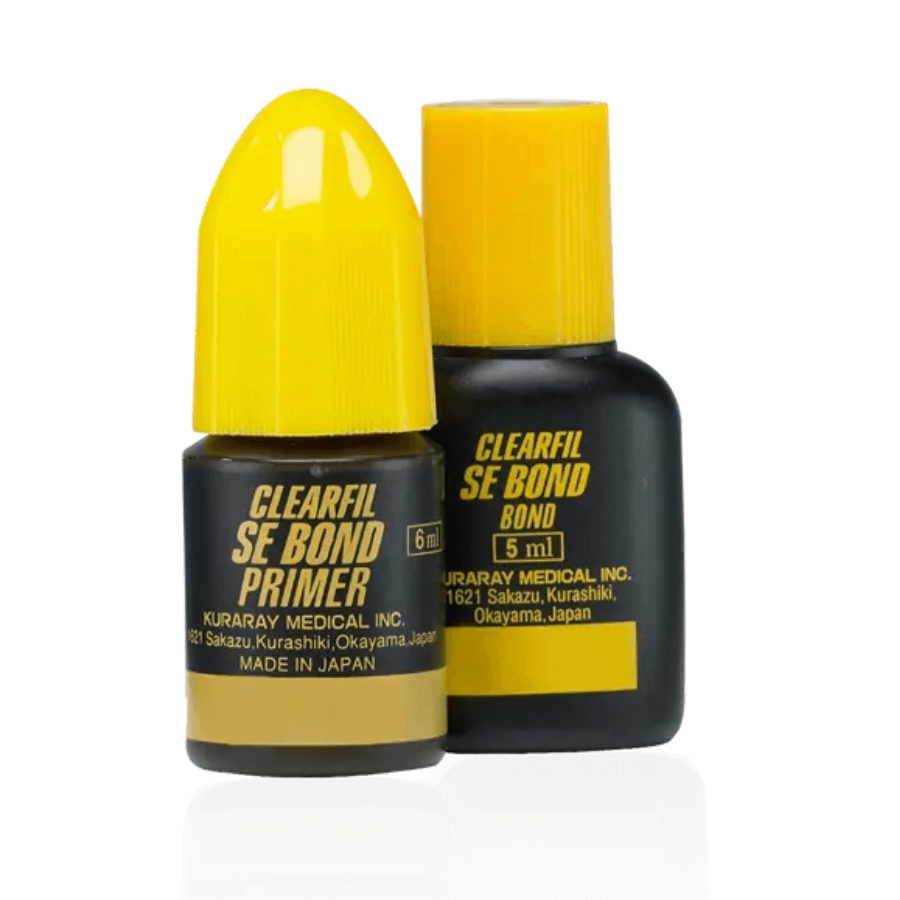
View Kuraray Clearfil SE Bond Kit Adhesive
Seventh generation dental adhesives
The seventh and current generation of adhesives achieves simplify to those of the sixth generation, requiring only one component, one bottle. The seventh generation of adhesives is available in self-etch, like its predecessor, and represents the most current formulation of dental adhesives available on the market. Among its improvements is its exceptional bond strength to dentin and enamel, as well as ceramics and metals. Another advantage is that seventh-generation adhesives are not sensitive to the amount of residual moisture on the preparation surface.
If what you need is a self-etching adhesive that is also single-component, the seventh generation of adhesives has the solution. We recommend:
Voco Futurabond M Adhesive
- Excellent adhesion to enamel and dentin
- Simple and fast application
- Sufficient film thickness for single-layer technique
- Universally usable under all sealing materials
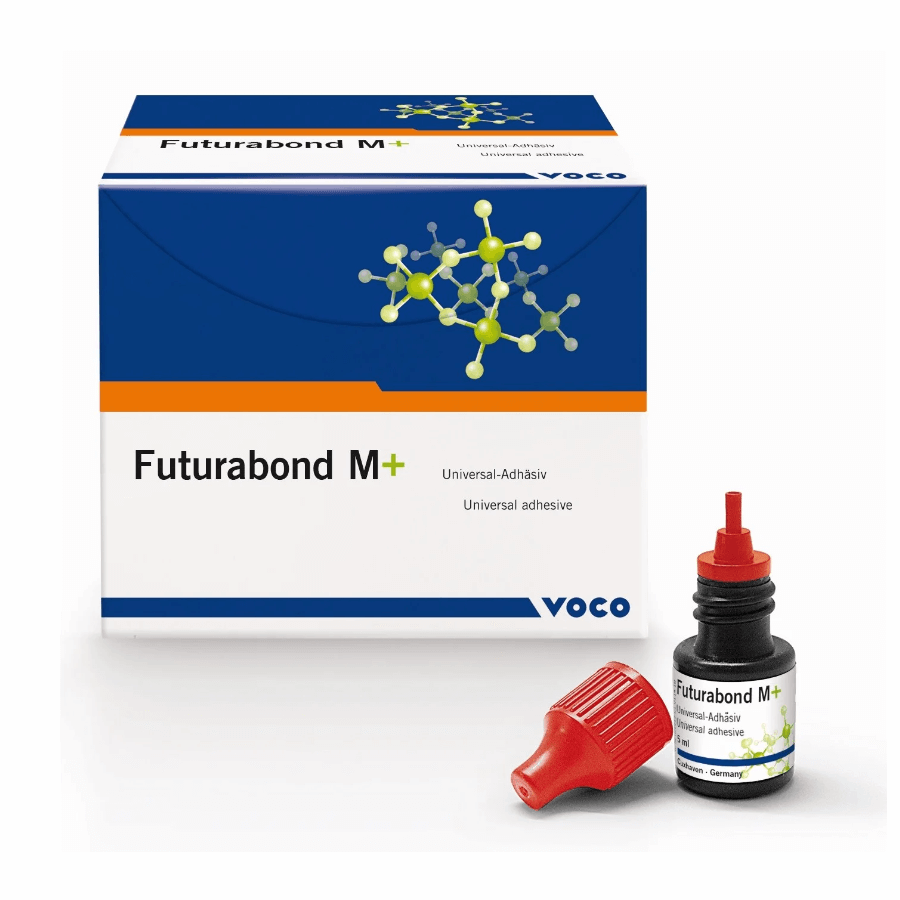
View Voco Futurabond M Adhesive
That a single product, the dental adhesive, is able to closely bond to substrates as different as enamel and dentin, is a great achievement for dental materials science. As we have seen, the evolution of these products is astonishing because in addition to improving their properties, they have minimized the possibilities of operator error.
The adhesion in dentistry is constantly evolving with the aim of optimizing results and reducing the number of clinical steps. The market today offers a wide variety of dental adhesives of different generations (usually from the fifth to the seventh) and of various characteristics. We hope to have contributed with this article to a good overview of the historical evolution of these products that transformed dentistry to a more conservative approach.
If you want to be always up to date on the latest news in the dental sector, we invite you to keep an eye on our blog articles and to follow us through our social networks. See you soon!





